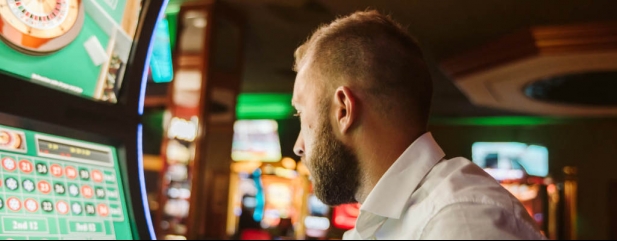Archived article
Please note that tax, investment, pension and ISA rules can change and the information and any views contained in this article may now be inaccurate.
Why 50% share price upside could be on the cards at Quixant

Rapid recovery growth, a sharp technological edge and decent pricing power, born in Britain technology company Quixant (QXT:AIM) is on the up again after falling from its previous lofty perch.

Quixant is a Cambridge-based developer of logic boxes that control pay-to-play digital gaming machines. Think the one arm bandits, quizzes, bingo, casino games and more that you see in pubs and betting shops and occupy vast halls in large casinos.
The logic box basically acts as the brains behind the games, doing all the complicated mathematics that determine winners and losers, and importantly, calculate pay-out ratios on which operator profits are based.
In full year 2020 results, announced in April, management noted growing positive sentiment and a steady improvement in revenues across the US casino industry.
Las Vegas has lagged other parts of the industry in its recovery from enforced closure during the teeth of the pandemic and Nevada’s world famous ‘Strip’ has suffered more than most because of its reliance on tourism and conventions, but even there Quixant is seeing signs of improving demand.
The Associated Press reported in April increases in airport passenger numbers and tourism. March 2021 saw Nevada’s casino operators bag house winnings of more than $1 billion for the first time since February 2020.
Data from industry researcher Eilers & Krejcik indicates that slot machine replacement sales have climbed back to 50% of pre-Covid levels.
KEY CUSTOMER DATA
Everi, the $2 billion New York-listed designer and manufacturer of casino games, recently confirmed ‘record’ second quarter numbers with performance considerably ahead of pre-pandemic levels. It also banked its biggest ever quarterly net profit of $36.2 million, bouncing from 2020’s equivalent $68.5 million loss.

This is great news for Quixant because Everi is its number one customer, supplying the logic box technology for all of its machines. That Everi continues to expand its own installed base points to higher levels of gaming machine unit sales for Quixant.
Outsourced logic boxes are becoming the norm across the vast and competitive gaming machine industry because it frees game manufacturers to concentrate on game design and development, the key selling point that pulls players from one terminal to another. Quixant’s all-in-one boxed solution offers a low-cost, high-quality and innovative solution.
Before the pandemic there were an estimated eight million gaming machines installed worldwide, yet analyst believe that something like 90% of them are built by just five top tier manufacturers; a couple in the US, one in Australia, two more in central Europe. These cover gaming machines installed from Las Vegas to London, Monte Carlo to Macau.
To date Quixant’s success has been built on supplying smaller game machine makers outside that group. But importantly, management are on cozy terms with all of the tier-1 suppliers top brass, with small scale projects undertaken with each of the big five.
Large scale adoption of outsourced logic boxes is widely believed to be a matter of when, not if, and the impact on Quixant revenue could be significant once that trend reaches a tipping point. For example, in the past Quixant has said that a typical tier-2 contract would be for approximately 10,000 logic boxes, in a good year. A similar tier-1 order would be 10-times that amount.
WIDENING THE CUSTOMER BASE
That said, part of Quixant’s past problems have been because of its reliance on a small number of large customers. It has been working to reduce this, and management expects sports betting terminals and winning new customers to help. It had $17.4 million net cash on the books at the end of 2020, a nice buffer if there are further bumps in the road.

In the meantime, Quixant remains very much in recovery mode. Unsurprisingly, revenue and profit were smashed last year, running up a $3 million net loss after sales plunged by a third to $63.8 million. This year analyst see an incremental sales recovery but a much faster profit rally as margins are rebuilt.
Operating profit margins this year are predicted at around 8%, from 2.3% in 2020, but there is considerable upside potential over the following years. 2018 margins were 16%. Presuming solid management execution, this should spark several years of rapid earnings recovery, driving the shares much higher.
If we assume that Quixant’s recovery remains on track, 2023 earnings of $0.15 (approximately 11p) that imply 25% growth, is not too big a stretch. In 2018 it reported $0.26 of earnings per share.
If we also assume that investors, over time, become willing to pay a higher price for this sort of growth, and push the price to earnings multiple to, say 25, it would imply a 275p share price over the next 12 to 18 months, or 56% upside.
Important information:
These articles are provided by Shares magazine which is published by AJ Bell Media, a part of AJ Bell. Shares is not written by AJ Bell.
Shares is provided for your general information and use and is not a personal recommendation to invest. It is not intended to be relied upon by you in making or not making any investment decisions. The investments referred to in these articles will not be suitable for all investors. If in doubt please seek appropriate independent financial advice.
Investors acting on the information in these articles do so at their own risk and AJ Bell Media and its staff do not accept liability for losses suffered by investors as a result of their investment decisions.
Issue contents
Editor's View
Exchange-Traded Funds
Great Ideas
Investment Trusts
Money Matters
News
- Food ingredients giant picks London for IPO
- What BHP’s big news means for investors
- Wealth management could be answer to banks' profitability problem
- Private equity backed Zooplus could pressure Pets at Home
- Pandemic winners become re-opening losers as punters tune out
- Global M&A activity hits record levels, surpassing last year’s total

 magazine
magazine








